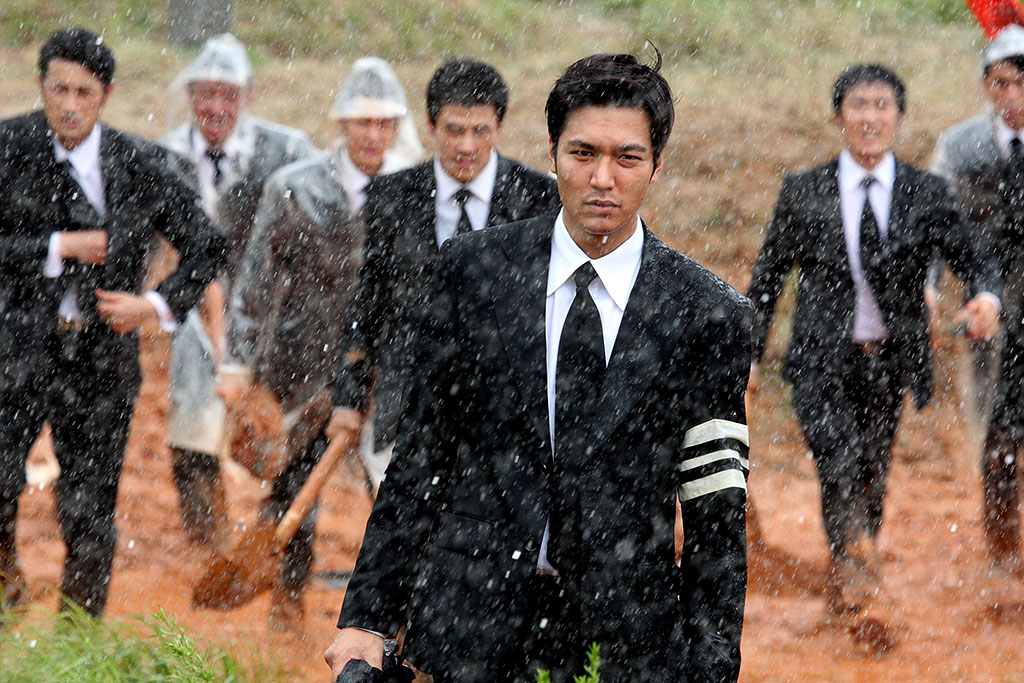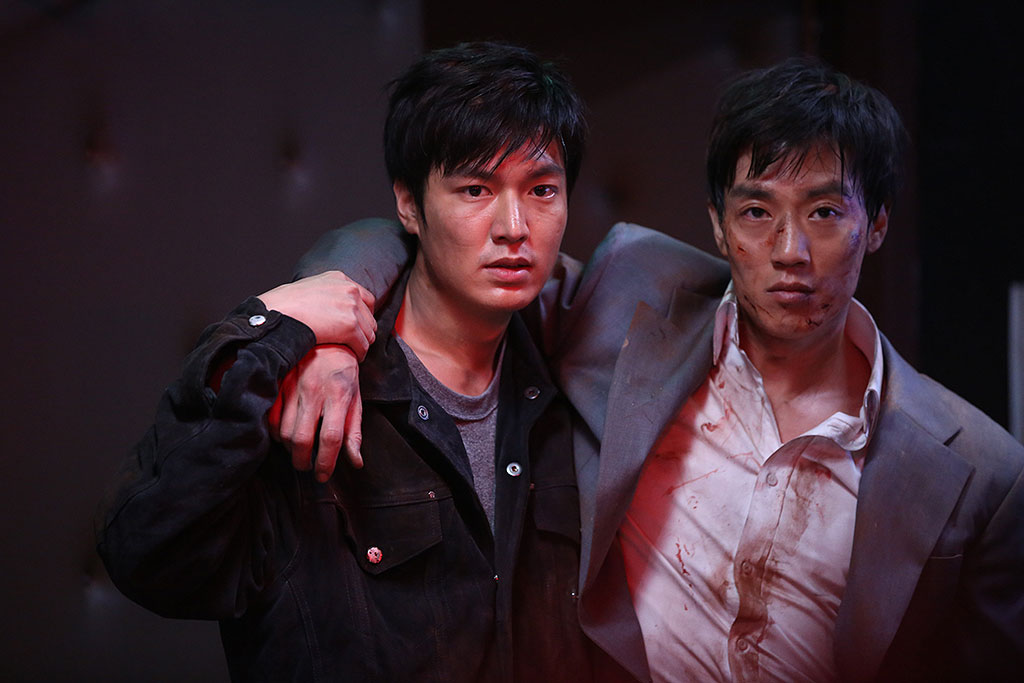‘Gangnam Blues’ Delivers Beautifully Gory Cinematography & Stellar Lee Min Ho Performance
[Disclaimer: This post contains some spoilers]
Before Gangnam was synonymous with opulence for PSY to satirize it, Seoul’s most affluent district was mostly dirt poor farms in the ‘70s. And in Lee Min Ho’s first starring role in the film Gangnam Blues (also known as Gangnam 1970) we get to see exactly what the skyscrapers and luxury residential areas were built on: blood and corruption.
The plot follows Kim Jong Dae (Lee Min Ho) and Baek Yong Ki (Kim Rae Won), two guys bound together after growing up in an orphanage, in their journey from rags to gangsters to, ultimately, their demise. Shot in noir, the cinematography and the plot work together to show the violence and the decadence of the city and its characters. Similar to director and writer Yoo Ha’s predecessor films Spirit of Jeet Keun Do and A Dirty Carnival, Gangnam Blues deals with the good old themes of violence and conspiracy by the powerful. As well as ambition and survival within an urban setting in a developing country.
And because it deals with violence, the film is obviously gory and explicit. Because just as Kim’s boss Kang Gil Soo (Jung Jin Young, Love Rain, Miracle in Cell No. 7) forewarns and foreshadows before war between gangs erupts, gangsters are for using and throwing away, and that’s the most prominent theme in all of Gangnam Blues. Gangsters die left and right all throughout the film to show just how expendable people were at the hands of those in power or in the pursuit thereof.
Also on KultScene: 10 Epik High Songs To Get You Ready For Their North American Tour [UPDATED]
Yoo Ha emulated the classic Scorsese gangster story by glamorizing the hustler’s lives to a point, but not depicting them as good people. The characters are not one dimensional — either innately good or pervasively evil — they have depth and stories and purposes. While Kim Jong Dae genuinely cared about Kang and Seon Hye (Kim Seolhyun) and looked after “his boys” and Baek protected Kim, they were both cold blooded killers who didn’t second guess committing the most gruesome murders.
But even if murder is a terrible sight, it was — I can’t believe I’m saying this — beautifully shot. Actually, the entire cinematography in Gangnam Blues was stunning. Pause any moment in the film and you can get an amazing picture. The close up and medium shots throughout the film were used exquisitely to show detail and give insight. The cinematography favored clarity over gimmicks and it worked perfectly. But getting back to the topic of murders, they were shot in a very vivid manner, breaking the noir to show bright reds in either the blood or neon lights in the scenes where Kim and Baek committed crimes together, making the violence more garish, over the top, and significant.
Moreover, with Gangnam Blues being Lee Min Ho’s breakout movie role as a lead actor, a lot of expectation was placed upon him. And while it may be a little hard for K-drama fans to divorce from the chaebol, flower boy image normally associated with him, there was no trace of it in this film (other than his good looks, of course, which, c’mon, he can’t escape that). At the beginning, he gave us a major Faith throwback with his long hair, but once cut his hair and became a gangster, all of Lee Min Ho’s previous characters went out the window. He showed pretty much every emotion in the book without looking fake or too theatrical. Even his fight and murder scenes suited him; you completely believe this guy’s trouble. In Gangnam Blues , Lee Min Ho proved that he’s ready to move into the movie industry.
Taking everything into account, it’s perfectly understandable why Gangnam Blues topped the box office on its opening day in South Korea last year. The movie is beautifully shot, the characters excel with their performances, and the plot properly addresses and conveys all of its messages. The only negative aspects are the abundance of secondary characters, given that it was hard to keep up with who was in what gang and who died and who didn’t. Also, the ending was a bit disappointing. If it had ended with the voice over as the camera zoomed out of the tunnel, it would’ve ended in full circle. The shot of modern day Gangnam was a bit unnecessary since audiences know what the district looks like today. The tunnel shot was a hundred times more compelling. But other than that, Gangnam Blues is a clear winner, offering an original take on the gangster movies.
Also on KultScene: 5 Korean Movies To Watch Over Spring Break
Check out the movie’s trailer here:


